We offer a comprehensive range of JIC hydraulic fittings, known for their 37-degree flare seat that creates a robust metal-to-metal seal. These fittings, conforming to SAE J514 standards, are highly popular in hydraulic systems due to their reliability, ease of assembly, and excellent performance under high pressure. They’re a versatile and widely interchangeable solution for various industrial applications.
JIC fittings utilize a 37-degree flared seating surface on both the male and female ends, creating a robust metal-to-metal seal when tightened. This design eliminates the need for O-rings or sealants, reducing potential leak points and improving system reliability, especially in high-pressure or vibrating environments. The direct contact ensures a secure connection that can withstand significant operational demands without compromising fluid containment.
The simplicity of the JIC design facilitates quick and straightforward assembly and disassembly, which is a significant advantage during installation, maintenance, and repair. Only a wrench is typically required to make or break the connection. Unlike tapered pipe threads, JIC fittings do not rely on thread interference for sealing, making them easier to install correctly and less prone to over-tightening damage, streamlining fieldwork and reducing downtime.
Due to their robust design and effective metal-to-metal sealing mechanism, JIC fittings consistently offer excellent pressure ratings suitable for a wide range of hydraulic applications. Their ability to form a strong, leak-resistant connection allows them to handle high operating pressures without risk of blow-off or weeping. This makes them a dependable choice for demanding industrial and mobile hydraulic machinery where system integrity under pressure is critical.
JIC fittings adhere to the SAE J514 standard, ensuring broad interoperability and interchangeability across different manufacturers worldwide. This standardization means that components from various suppliers can be easily mixed and matched, simplifying procurement and replacement. Their widespread adoption also ensures high availability, making it easier to find suitable fittings and replacement parts, which is crucial for minimizing delays in repairs and system expansions globally.
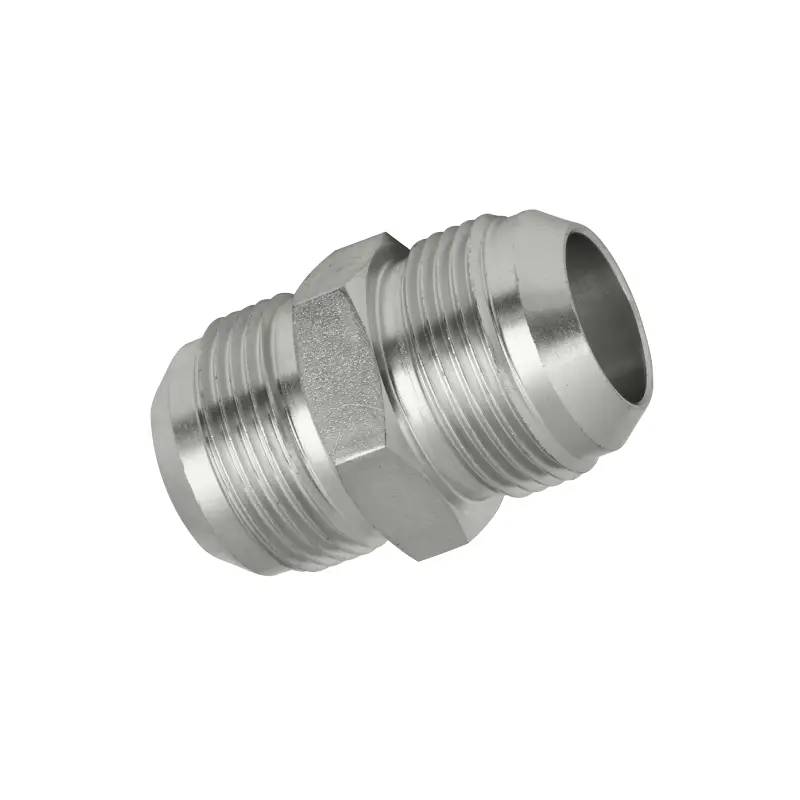
We offer a robust selection of 1/2 JIC fittings, perfectly suited for hydraulic applications requiring a 1/2-inch nominal size. These fittings feature the standard 37-degree flare for a reliable metal-to-metal seal, ensuring exceptional leak resistance and high-pressure performance. Manufactured to meet SAE J514 standards, our 1/2 JIC fittings provide excellent interoperability, simplifying your system design and maintenance needs with their widespread compatibility and ease of assembly.
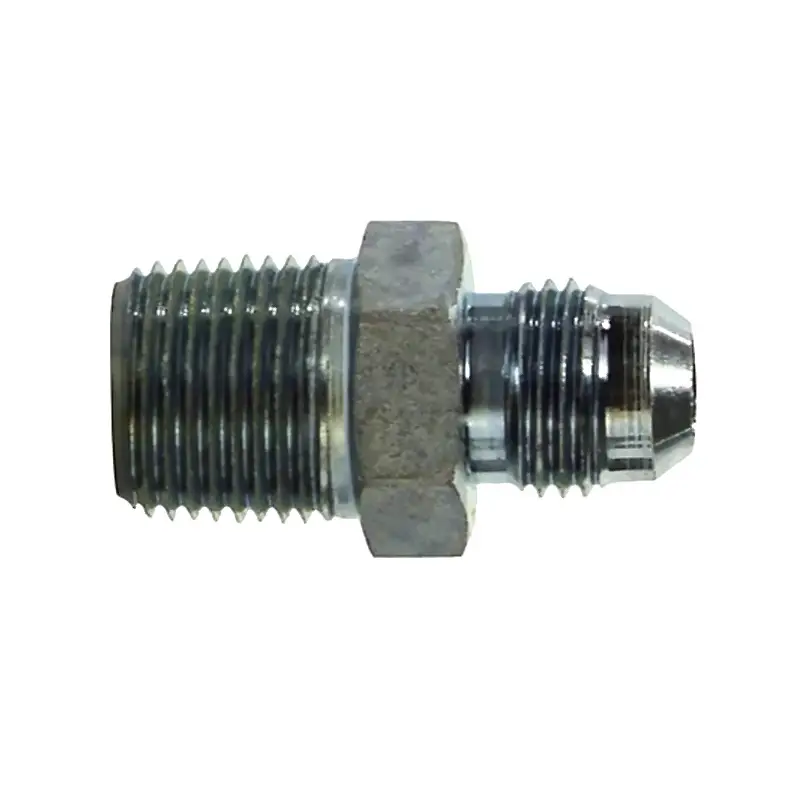
We proudly offer a comprehensive selection of 3/4 JIC hydraulic fittings, essential for numerous fluid power applications. These -12 dash size fittings feature the industry-standard 1-1/16″-12 UN thread and a 37-degree flare, ensuring reliable metal-to-metal sealing. Available in various configurations and materials, our 3/4 JIC fittings provide excellent pressure ratings and ease of installation, making them ideal for connecting 3/4-inch tubing in diverse hydraulic systems.
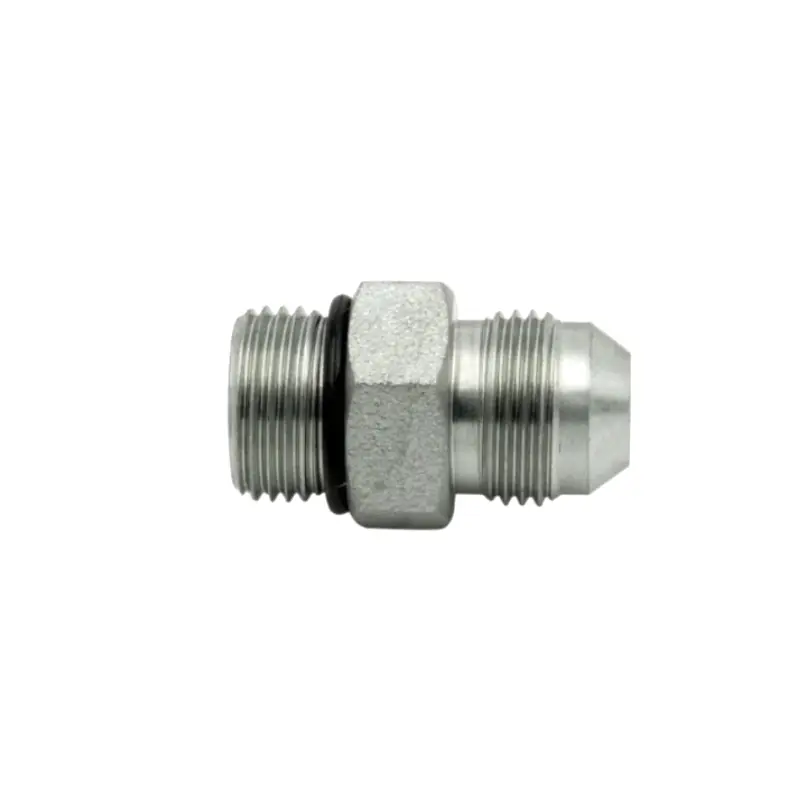
We offer a robust selection of 3/8 JIC hydraulic fittings, a popular size for medium-pressure hydraulic lines. These fittings feature the standard 37-degree flare for a dependable metal-to-metal seal, ensuring leak-free connections. Ideal for applications requiring robust and easily serviceable connections, our 3/8 JIC fittings are manufactured to meet SAE J514 standards, guaranteeing compatibility and high performance in diverse hydraulic systems.
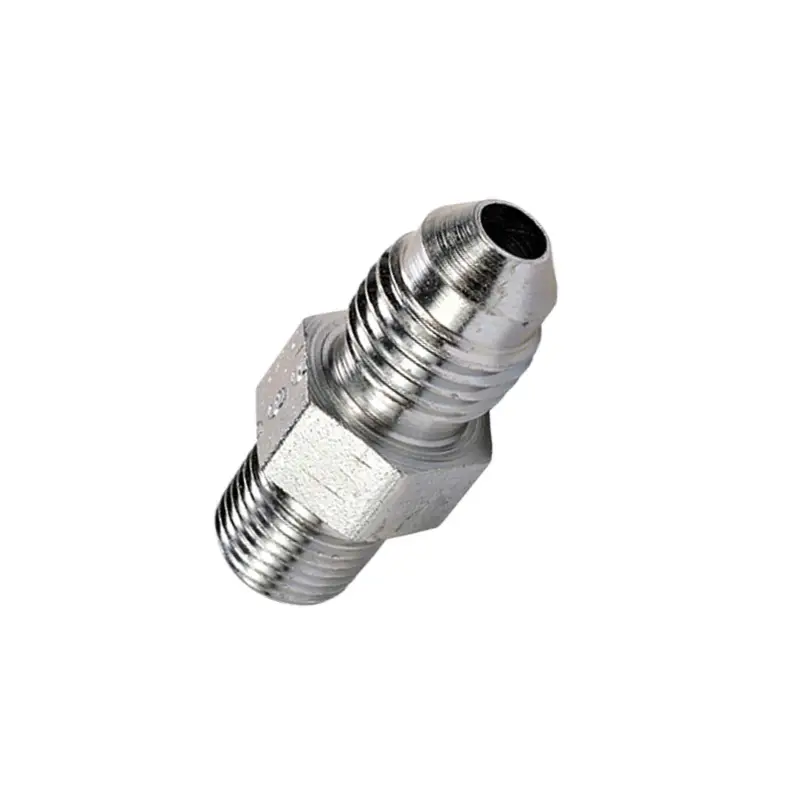
We offer a variety of 1/8 JIC hydraulic fittings, a common size (-02 dash size) featuring a 5/16″-24 UNF thread and the characteristic 37-degree flare. These compact fittings are ideal for smaller hydraulic lines, diagnostic ports, and low-flow applications where reliable, leak-free connections are essential. Our selection ensures compatibility and performance for your specific needs, meeting SAE J514 standards.
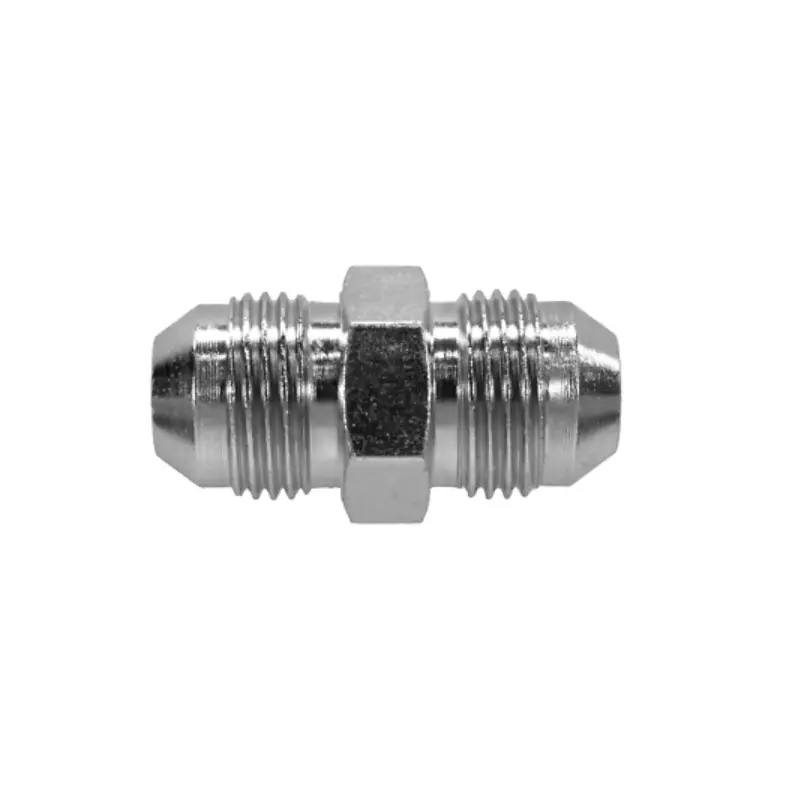
We proudly offer a comprehensive range of 5/8 JIC hydraulic fittings, a popular size for medium to high-pressure applications. These fittings feature the reliable 37-degree flare for a robust metal-to-metal seal, ensuring leak-free connections. Our selection includes various configurations like adapters, elbows, and tees, all designed to meet stringent industry standards, providing dependable performance for your hydraulic system requirements.

We proudly offer a comprehensive selection of 5/16 JIC fittings, an essential size within the SAE J514 standard. These fittings feature the reliable 37-degree flare for a robust metal-to-metal seal, ensuring exceptional performance in demanding hydraulic applications. Ideal for various industries, our 5/16 JIC fittings provide leak-free connections and are readily available for your system requirements.
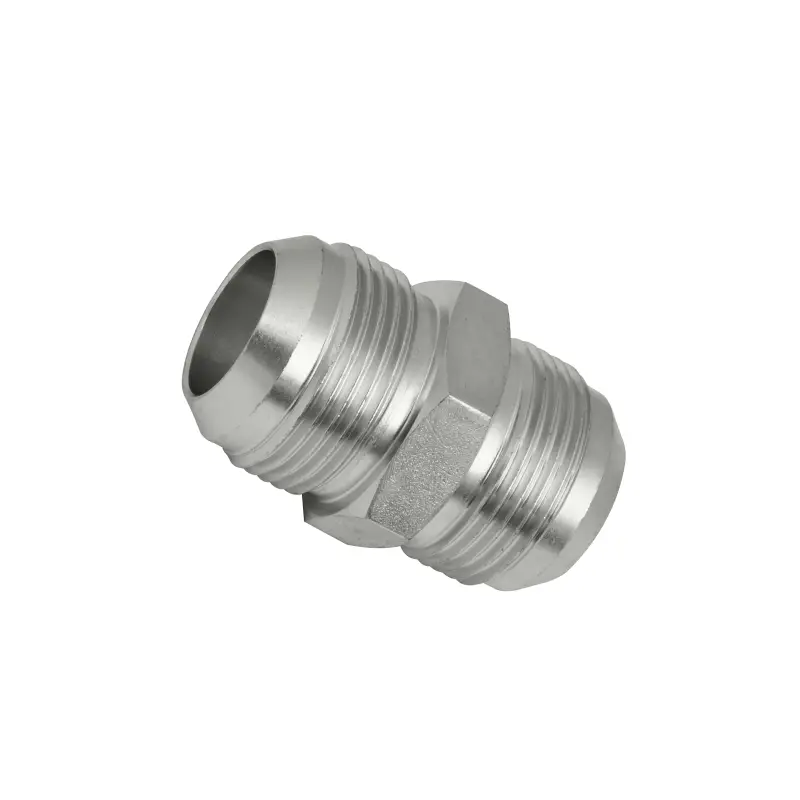
We offer a comprehensive selection of 7/16 JIC fittings, a common size within the 37-degree flare standard. These precision-engineered fittings provide a reliable metal-to-metal seal for various hydraulic applications, ensuring leak-free connections even under demanding pressure. Their adherence to SAE J514 standards guarantees interchangeability and widespread availability, making them a dependable choice for your hydraulic system needs.
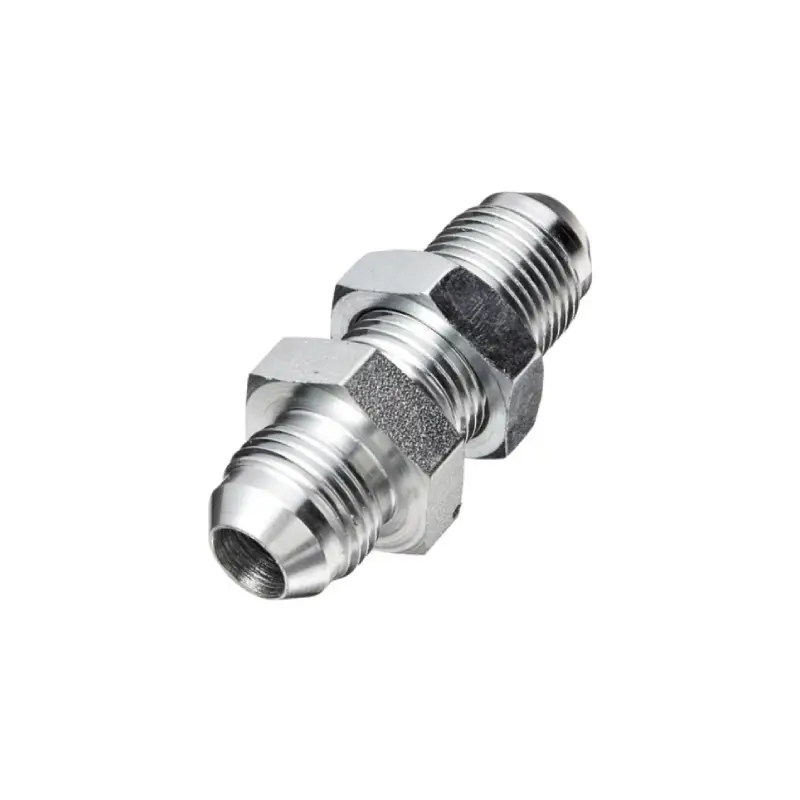
We proudly offer 9/16 JIC hydraulic fittings, a popular size (-06 dash size) featuring a 9/16″-18 UNF thread. These fittings are crucial for creating reliable, leak-free connections in hydraulic systems, conforming to the SAE J514 standard. Ideal for a 3/8″ OD tube, our 9/16 JIC fittings provide excellent pressure containment and are widely used across various industrial and mobile hydraulic applications.

We offer female JIC swivel fittings, designed for exceptional performance and ease of installation in various hydraulic applications. These fittings feature the standard 37-degree flare seat and a swivel nut, allowing for simple, leak-free connection without twisting the hose. Manufactured from durable materials, our female JIC swivels ensure reliable, high-pressure operation and long service life.

We offer a robust selection of JIC flare fittings, characterized by their precision-engineered 37-degree conical seat. These fittings provide a dependable metal-to-metal seal, eliminating the need for additional sealants and ensuring leak-free performance in demanding hydraulic systems. Compliant with SAE J514 standards, our JIC fittings guarantee interchangeability and reliable high-pressure connections across diverse industrial and mobile equipment applications.
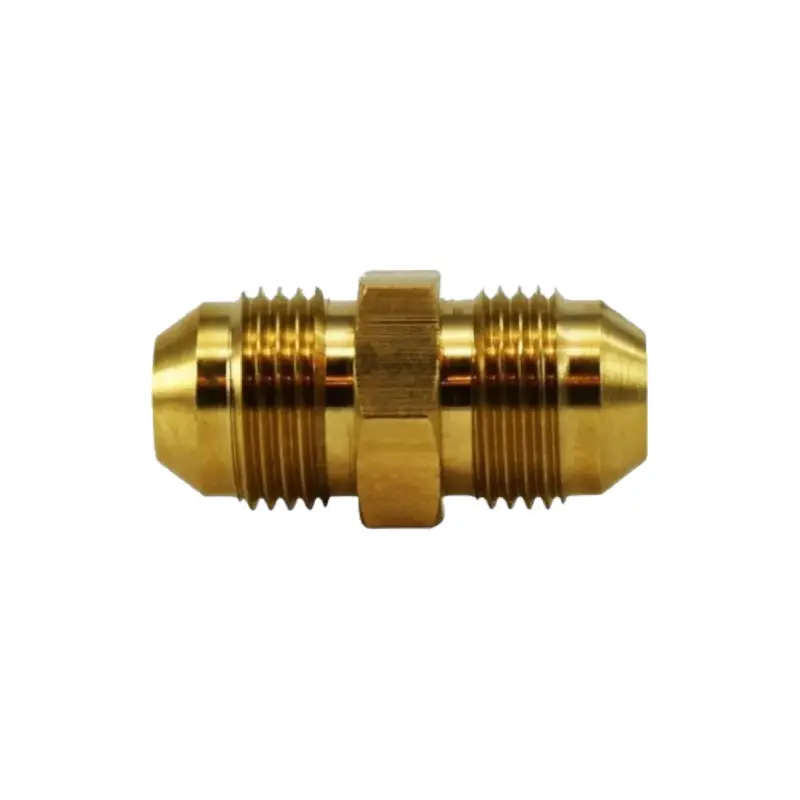
We offer high-quality brass JIC hydraulic fittings, ideal for applications where corrosion resistance and excellent machinability are crucial. These fittings maintain the reliable 37-degree flare seal of standard JIC, making them suitable for medium-pressure hydraulic systems, pneumatic lines, and other fluid transfer applications where steel or stainless steel might be overkill. Their aesthetic appeal and non-sparking properties also make them a preferred choice in specific environments.
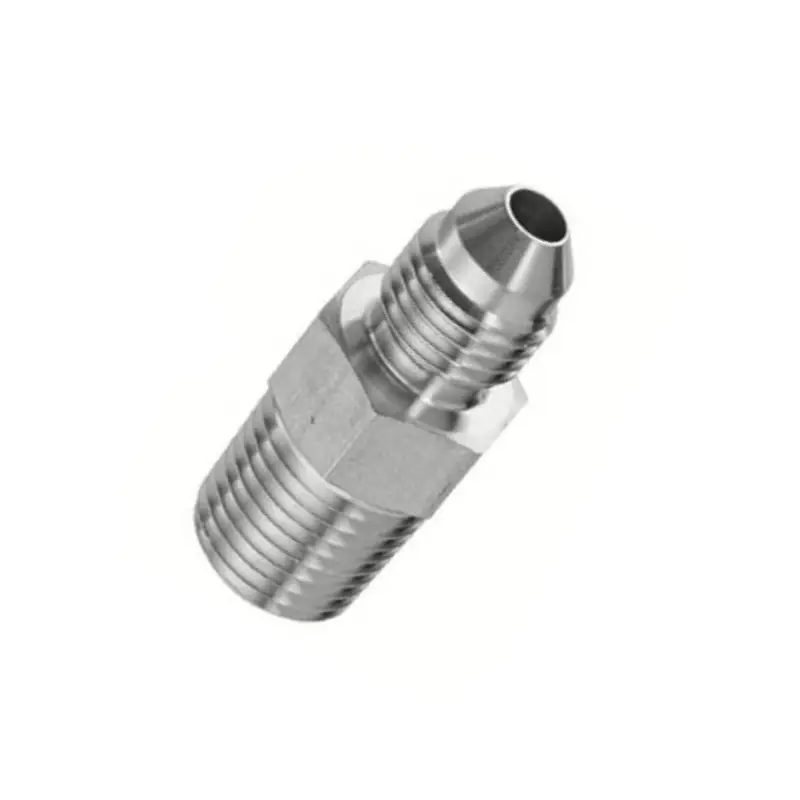
We proudly offer a comprehensive selection of 37-degree JIC fittings, engineered for superior performance in diverse hydraulic applications. Recognized for their robust metal-to-metal sealing capability, these fittings conform to SAE J514 standards, ensuring universal compatibility and interchangeability. Their design facilitates secure, leak-free connections, making them an ideal choice for high-pressure systems requiring reliability, ease of assembly, and broad availability. Our range supports various configurations to meet your specific needs.
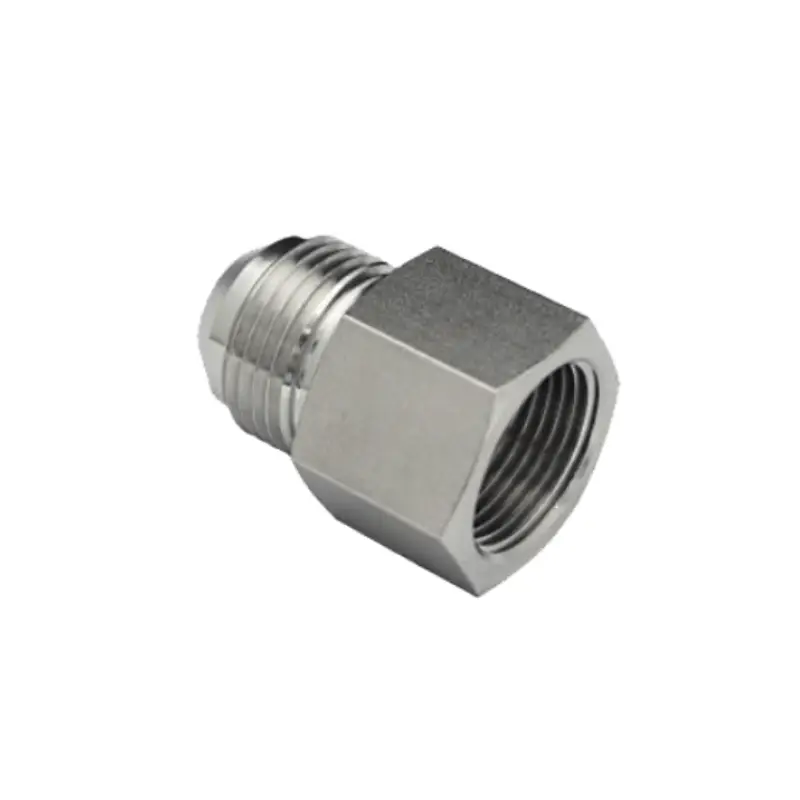
We specialize in providing high-pressure JIC hydraulic fittings, engineered for demanding applications. Our fittings conform to SAE J514 standards, offering robust metal-to-metal sealing and reliable performance up to 10,000 PSI (689 bar) or more, depending on size and material (e.g., carbon steel, stainless steel). These durable components ensure system integrity and leak-free operation in critical hydraulic systems.

We offer specialized JIC banjo fittings, combining the reliable 37-degree flare seal of JIC connections with the unique space-saving design of a banjo fitting. These fittings are ideal for applications requiring compact, low-profile connections or where tubing needs to be routed in tight spaces with directional flow control. They provide a secure, leak-free solution for various hydraulic circuits, ensuring efficiency even in constrained layouts.
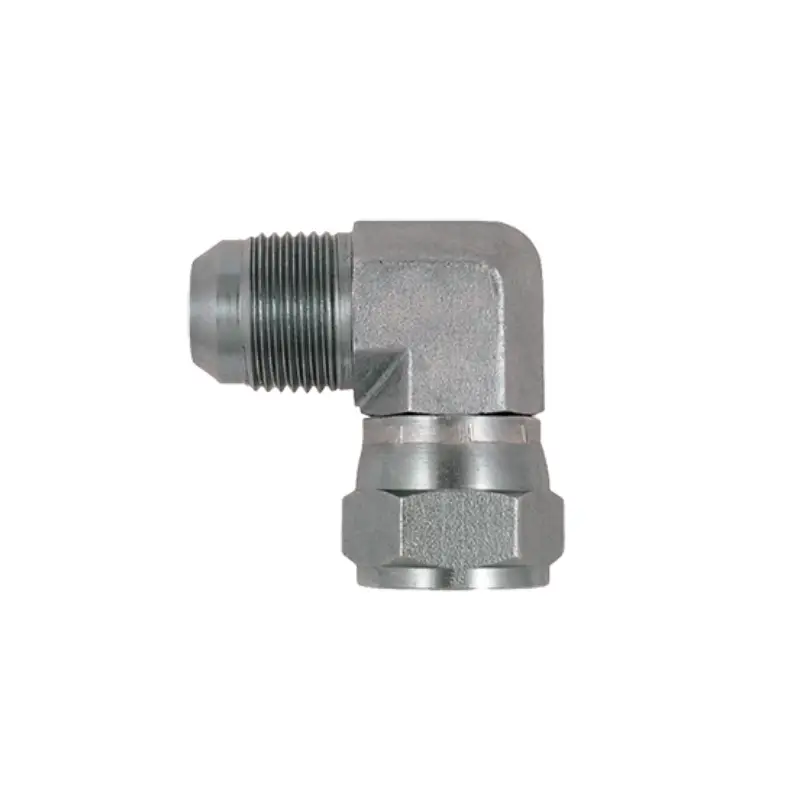
We offer a diverse selection of JIC elbow fittings, specifically designed to alter flow direction in hydraulic systems while maintaining a secure, leak-free connection. Available in various angles (e.g., 45-degree, 90-degree) and sizes, these fittings feature the reliable 37-degree flare seat for superior metal-to-metal sealing. Ideal for optimizing hose routing and space management, our JIC elbows ensure robust performance in demanding high-pressure applications.
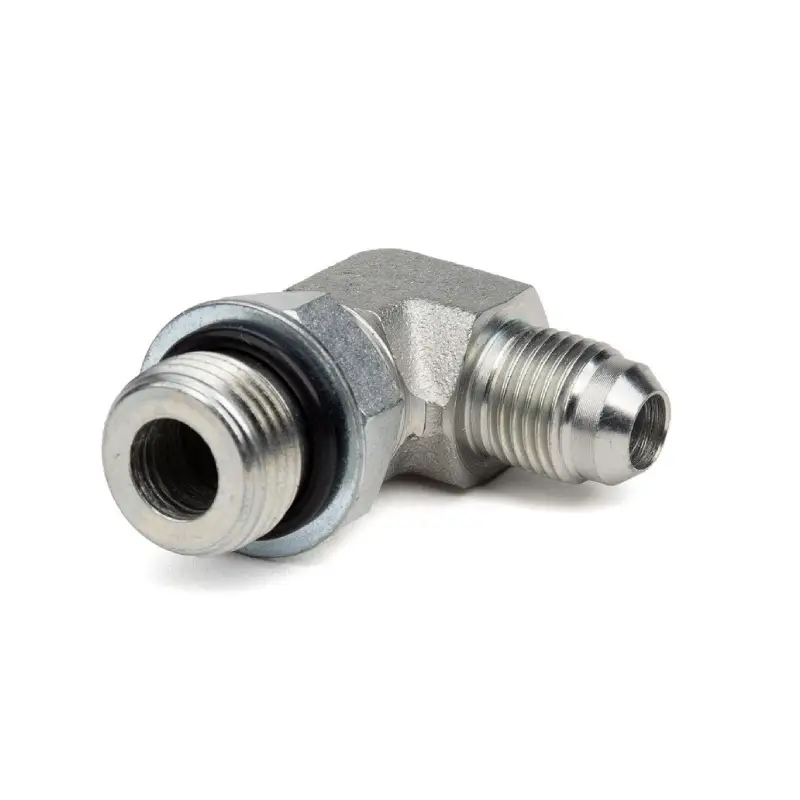
While traditional JIC fittings rely solely on a metal-to-metal flare seal, we also offer JIC hydraulic fittings incorporating an O-ring for enhanced sealing performance. These specialized fittings, sometimes referred to as JIC-OR (O-Ring) or Soft Seal JIC, integrate an O-ring at the nose of the 37-degree flare. This dual-seal mechanism provides superior leak prevention, particularly advantageous in high-vibration applications or where zero leakage is paramount, offering increased reliability and peace of mind.
JIC (Joint Industry Council) hydraulic fittings are a widely recognized and utilized type of flare fitting, predominantly defined by the SAE J514 standard. Their key characteristic is a 37-degree flared seating surface on both the male and female components, which creates a reliable metal-to-metal seal when tightened.
This design allows for excellent pressure capabilities and good resistance to vibration, making them a popular choice across various industries such as manufacturing, agriculture, automotive, and aerospace for connecting hydraulic hoses and tubing.
While often confused due to their similar appearance and the shared 37-degree flare angle for sealing, JIC (Joint Industry Council) and AN (Army-Navy) hydraulic fittings have distinct differences rooted in their original applications and manufacturing tolerances.
AN fittings were developed for military aviation during World War II, requiring extremely high precision, tight tolerances, and superior fatigue resistance for critical aerospace and defense systems. This led to specific thread forms and material specifications designed for ultimate reliability in demanding environments.
In contrast, JIC fittings emerged post-war as an industrial standard based on the AN design, but with slightly relaxed manufacturing tolerances. This adjustment made them more cost-effective to produce and more widely available for general industrial applications like construction, agriculture, and manufacturing. While both types utilize the same 37-degree flare principle for sealing, the subtle variations in thread class and overall manufacturing precision mean they are not truly interchangeable for all applications, particularly where the stringent requirements of AN fittings are paramount.
Here are the key differences:
Standards and Applications:
Thread Specifications:
Materials and Cost:
Interchangeability (Caution Advised):
Here’s how to accurately measure JIC hydraulic fittings to ensure proper replacement or selection. Precise measurements are crucial for a leak-free connection, as even slight discrepancies can compromise system integrity. This guide will walk you through the essential steps, focusing on the key dimensions required for identification.
Before you start measuring, first confirm that the fitting is indeed a JIC type, recognizable by its signature 37-degree flare. Then, determine its gender: is it a male fitting (with external threads and the flare on the outside of the cone) or a female fitting (with internal threads and the flare on the inside of the cone)? This initial visual check helps you know exactly what features to focus on for subsequent measurements.
The most crucial step in identifying JIC fittings is accurately measuring the thread diameter. For a male fitting, use a caliper to measure the outside diameter (OD) of the threads. If you have a female fitting, measure the inside diameter (ID) of the threads. Always measure the actual threads themselves, not the hexagonal nut portion, as this measurement directly corresponds to the fitting’s nominal thread size.
Once you have the thread diameter, the next step is to determine the thread pitch, which is the number of threads per inch (TPI). Use a thread gauge (also called a pitch gauge) by carefully matching its blades to the threads of your fitting. The blade that fits perfectly, without any gaps or wobble, will indicate the correct TPI. This measurement, combined with the thread diameter, provides the unique identifier for the fitting’s thread.
While all JIC fittings are characterized by a 37-degree flare, it’s always good practice to verify this angle, especially if you’re unsure about the fitting type. You can use a dedicated flare angle gauge, a cone-shaped tool designed for this purpose. Simply place the gauge over the fitting’s flare; a perfect, gap-free fit confirms it’s a 37-degree angle, essential for a proper, leak-proof seal with its mating component.
After confirming the thread diameter and pitch, the final step is to determine the fitting’s “dash size.” JIC fittings are sized using this industry-standard system, which refers to the tube’s outer diameter in sixteenths of an inch. Consult a JIC fitting size chart (readily available online or in hydraulic catalogs). Your measured thread size (e.g., 7/16-20 UNF) will directly correlate to a specific dash size (e.g., -4, meaning 4/16″ or 1/4″ tube).
To confidently identify JIC hydraulic fittings, a systematic approach combining visual inspection with precise measurement is essential. This process helps differentiate them from similar-looking fittings and ensures you select the correct component for a secure, leak-free hydraulic connection.
Begin by visually examining the fitting. The most distinguishing feature of a JIC fitting is its 37-degree flare seat. You can often confirm this by using a dedicated flare angle gauge. Place the gauge over the flared end; if it sits flush and perfectly matches the contour without any gaps, it confirms the 37-degree angle, which is unique to JIC fittings and differentiates them from similar SAE 45-degree flares.
Next, identify whether the fitting is male or female. A male fitting will have external threads and an outward-flaring cone, designed to fit into a female port. A female fitting will have internal threads and an inward-flaring cone. Knowing the gender is crucial because the measurement points for thread diameter will differ between male and female fittings.
Using a caliper, accurately measure the thread diameter. For a male JIC fitting, measure the outside diameter (OD) of the threads. For a female JIC fitting, measure the inside diameter (ID) of the threads. It’s important to measure across the widest point of the threads, not the hexagonal nut portion, to ensure you get the true thread diameter. This measurement is a primary indicator of the fitting size.
After measuring the thread diameter, use a thread pitch gauge to determine the number of threads per inch (TPI). This tool has various blades, each corresponding to a specific TPI count. Carefully place the blades onto the fitting’s threads until you find one that fits perfectly into the grooves without any light showing through or wobble. This TPI measurement, combined with the thread diameter, precisely defines the thread specification (e.g., 7/16-20 UNF).
Finally, with your precise thread diameter and thread pitch measurements, refer to a JIC dash size chart. These charts list standard JIC thread sizes (e.g., 7/16-20 UNF) and their corresponding “dash size” (e.g., -4). The dash size nominally relates to the tube’s outer diameter in sixteenths of an inch. By cross-referencing your measurements with the chart, you can definitively identify the JIC fitting’s standard size.
When discussing hydraulic fittings, “SAE” can refer to a broad range of standards developed by the Society of Automotive Engineers, while “JIC” specifically refers to a type of flare fitting that is actually defined by an SAE standard (SAE J514). This often causes confusion because JIC fittings are a type of SAE fitting. However, in common industry parlance, when “SAE fittings” are distinguished from JIC, it often refers to the SAE 45-degree flare fittings (defined by SAE J512) or other SAE-defined connection types like O-ring boss (ORB) or O-ring face seal (ORFS) fittings.
The primary difference when comparing “SAE” (often implying the 45-degree flare) versus JIC (37-degree flare) lies in their flare angle and intended applications. The 37-degree flare of JIC fittings is designed for higher pressure hydraulic systems, offering robust metal-to-metal seals suitable for heavy-duty industrial and mobile equipment. In contrast, the 45-degree flare SAE fittings are typically found in lower to medium-pressure applications, such as automotive, refrigeration, and air conditioning systems, often used with softer tubing materials like copper due to the shallower flare angle.
Here are the key differences:
Flare Angle:
Standard Designation:
Typical Applications:
Interchangeability:
When discussing hydraulic fittings, “SAE” can refer to a broad range of standards developed by the Society of Automotive Engineers, while “JIC” specifically refers to a type of flare fitting that is actually defined by an SAE standard (SAE J514). This often causes confusion because JIC fittings are a type of SAE fitting. However, in common industry parlance, when “SAE fittings” are distinguished from JIC, it often refers to the SAE 45-degree flare fittings (defined by SAE J512) or other SAE-defined connection types like O-ring boss (ORB) or O-ring face seal (ORFS) fittings.
The primary difference when comparing “SAE” (often implying the 45-degree flare) versus JIC (37-degree flare) lies in their flare angle and intended applications. The 37-degree flare of JIC fittings is designed for higher pressure hydraulic systems, offering robust metal-to-metal seals suitable for heavy-duty industrial and mobile equipment. In contrast, the 45-degree flare SAE fittings are typically found in lower to medium-pressure applications, such as automotive, refrigeration, and air conditioning systems, often used with softer tubing materials like copper due to the shallower flare angle.
Here are the key differences:
Flare Angle:
Standard Designation:
Typical Applications:
Interchangeability:
When discussing hydraulic fittings, “SAE” can refer to a broad range of standards developed by the Society of Automotive Engineers, while “JIC” specifically refers to a type of flare fitting that is actually defined by an SAE standard (SAE J514). This often causes confusion because JIC fittings are a type of SAE fitting. However, in common industry parlance, when “SAE fittings” are distinguished from JIC, it often refers to the SAE 45-degree flare fittings (defined by SAE J512) or other SAE-defined connection types like O-ring boss (ORB) or O-ring face seal (ORFS) fittings.
The primary difference when comparing “SAE” (often implying the 45-degree flare) versus JIC (37-degree flare) lies in their flare angle and intended applications. The 37-degree flare of JIC fittings is designed for higher pressure hydraulic systems, offering robust metal-to-metal seals suitable for heavy-duty industrial and mobile equipment. In contrast, the 45-degree flare SAE fittings are typically found in lower to medium-pressure applications, such as automotive, refrigeration, and air conditioning systems, often used with softer tubing materials like copper due to the shallower flare angle.
Here are the key differences between JIC hydraulic fittings and NPT:
Flare Angle:
Standard Designation:
Typical Applications:
Interchangeability: